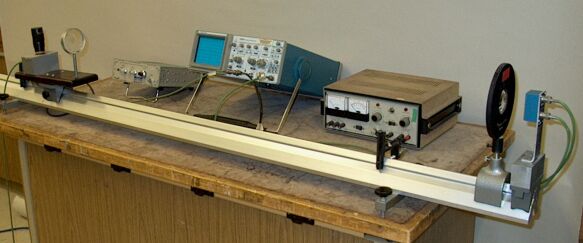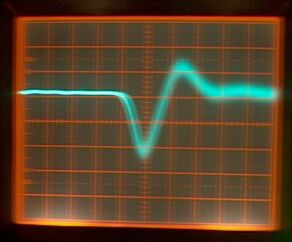

An LED (pictured above, far right) emits an invisible
pulse
of light which is passes through two lenses and into a photo multipler
tube
(pictured far left). From the tube the signal is passed into the
oscilloscope.
The signal that causes the LED to pulse also triggers the oscilloscope.
Moving
the LED along the optics rail causes the signal displayed on the
oscilloscope
to also move. Thus, the distance the LED is moved can be correlated
with
the time scale of the oscilloscope. A one meter long plexiglass rod can
be
placed on the rail in the path of the light to allow comparison of the
speed
of light in air and in plastic.